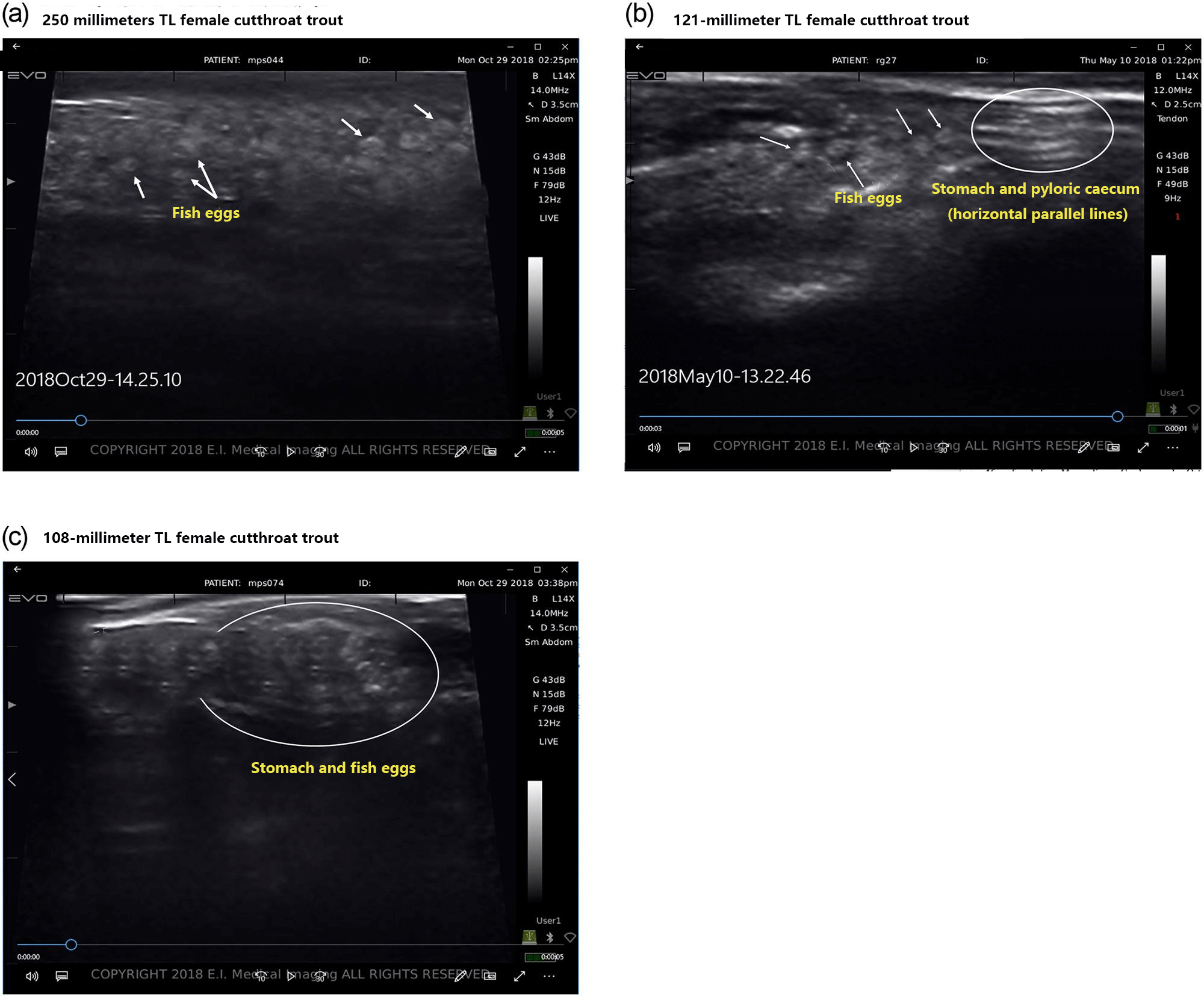Ultrasound imaging technology, as a non-invasive, real-time, and highly accurate tool, has been widely applied in fish sex identification and gonad maturity assessment, gradually replacing traditional invasive methods such as anatomical observation, gonadosomatic index (GSI) measurement, and hormone level detection. By providing real-time imaging of gonadal morphology and hemodynamic information, this technology offers scientific evidence for non-destructive sex segregation and optimal breeding timing in aquaculture. The sex ratio and gonad maturity of fish directly impact population structure, reproductive efficiency, and economic benefits, particularly in the conservation of wild fish and the sustainable development of aquaculture. This article explores the principles, applications, and research progress of ultrasound technology in major fish-farming countries (e.g., China, Norway, Japan, and the United States), along with its challenges and future directions.
Ultrasound Imaging Principles and Image Characteristics
Ultrasound imaging generates images through the reflection of high-frequency sound waves in fish tissues, with differences in acoustic impedance forming distinct echo patterns to identify gonad types and maturity stages:
-
Female Ovary: Mature ovaries exhibit granular echoes, with low-echo areas interspersed with high-reflection spots. In late maturity stages (III–IV), large high-echogenic follicles with clear boundaries are visible.
-
Male Testis: Testes show uniform, fine echoes. In mature stages (III–IV), smooth high-reflection areas are common, while early stages (I–II) exhibit weaker echoes, making differentiation from ovaries challenging.
-
Hemodynamics: Color Doppler ultrasound can further detect blood flow changes in gonads, providing additional data for maturity assessment.
Ultrasound technology has achieved significant results in various fish species, with the following notable ca
-
Silver Pomfret: Ultrasound imaging correlates strongly with GSI and hormone levels. By setting F3 (female maturity) and M3/M4 (male maturity) echo thresholds, mature individuals can be quickly identified, reducing handling frequency.
-
Nile Tilapia: Ultrasound achieves a sex identification accuracy of 95%, surpassing manual visual sorting (87%). However, imaging testes in individuals under 400 g remains challenging, requiring optimized probe frequency.
-
Atlantic Salmon: Ultrasound is used to monitor gonad maturity in wild and farmed male fish, significantly reducing unnecessary sacrifices and offering scalability.
-
Chinese Sturgeon: Combining ultrasound imaging with sex hormone measurements enables sex and maturity grading in 10–17-year-old individuals, demonstrating its potential in protecting endangered species.
-
Sex-Reversed Rainbow Trout: Ultrasound effectively evaluates gonadal structure in sex-reversed individuals, aiding in the cultivation of single-sex populations.

Research Progress in Major Fish-Farming Countries
Major fish-farming countries have made significant contributions to ultrasound technology, tailoring it to local needs and advancing its industrialization:
-
China: As the world’s largest aquaculture producer, China has made breakthroughs in ultrasound research for species like Chinese sturgeon, carp, and tilapia. Research institutions have developed low-cost, portable ultrasound devices for small and medium-sized fish, integrating AI algorithms to enhance image analysis efficiency. For instance, the Chinese Academy of Fishery Sciences developed an automated gonad maturity grading system based on ultrasound, improving sex segregation accuracy in farms.
-
Norway: Norway extensively applies ultrasound in Atlantic salmon and cod farming, focusing on the relationship between gonadal blood flow and maturity. The Norwegian Institute of Marine Research has developed high-frequency probes that clearly image testes in smaller fish, overcoming resolution limitations and suiting large-scale commercial aquaculture.
-
Japan: Japan has advanced ultrasound applications in high-value species like rainbow trout and bonito, particularly for sex reversal and gonad development monitoring. Japanese research institutions have combined ultrasound with genetic markers to develop non-invasive sex identification models, enhancing seed production efficiency.
-
United States: The U.S. promotes ultrasound use in catfish and salmon farming, particularly for small-scale farms. USDA-supported projects have focused on miniaturizing ultrasound devices to reduce costs, making them accessible to smaller farmers. Additionally, U.S. research teams have developed machine learning-based ultrasound image analysis tools to improve objectivity.
Technical Advantages and Challenges
Fish ultrasound technology offers the following advantages:
-
Non-Invasiveness: Avoids fish injury from traditional dissection, suitable for endangered species conservation.
-
Real-Time Capability: Enables rapid scanning in or out of water, ideal for large-scale aquaculture operations.
-
High Accuracy: Achieves over 90% accuracy in sex identification, surpassing traditional visual methods.
However, challenges remain:
-
Fish Size Limitation: Imaging testes in small fish (<200 g) is difficult, requiring higher-frequency probes and more sensitive equipment.
-
Equipment Cost: High-end ultrasound machines and color Doppler systems are expensive, limiting adoption by small-scale farmers.
-
Operator Expertise: Image interpretation relies on experience, necessitating automated analysis tools to reduce skill barriers.
Future Directions
To further promote fish ultrasound technology in aquaculture, the following steps are recommended:
-
Enhance Imaging Resolution: Develop ultra-high-frequency probes to improve testes imaging in small fish.
-
Reduce Equipment Costs: Create affordable, portable ultrasound devices to reach small and medium-scale farmers.
-
Standardization and Automation: Establish standardized image analysis protocols and integrate AI and machine learning to reduce reliance on operator expertise.
-
International Collaboration: Strengthen cooperation among China, Norway, Japan, the U.S., and others to share data and technologies, advancing sustainable global aquaculture.
Fish ultrasound technology, with its non-invasiveness, real-time capability, and high accuracy, is an ideal tool for sex identification and gonad maturity assessment. Continuous research by major fish-farming countries has driven technological advancements, particularly in endangered species conservation and commercial aquaculture optimization. Through future innovations in resolution, cost reduction, and automation, ultrasound technology is poised for broader adoption in global aquaculture, supporting sustainability and economic benefits.
Post time: Jul-22-2025



